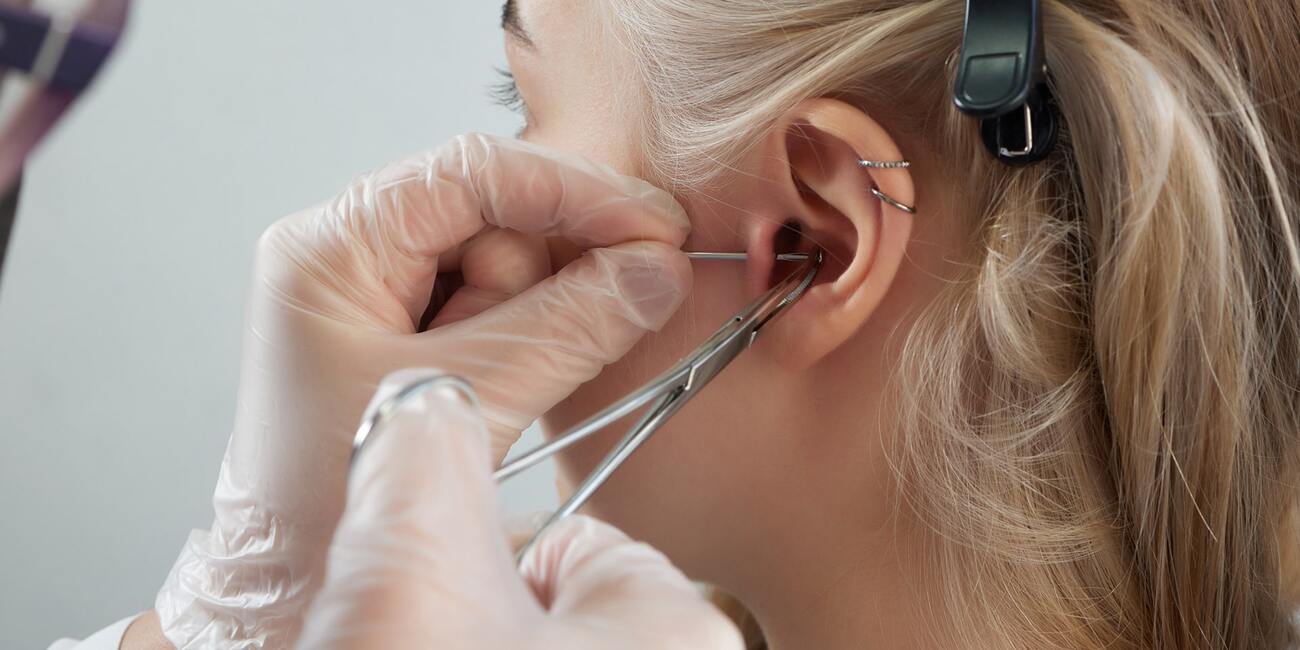Tragus piercings have become increasingly popular due to their unique location and stylish appeal. If you’re considering getting your tragus pierced, you’re probably wondering about the pain level and what to expect during and after the procedure. Here’s a comprehensive guide to help you prepare.
Pain Level
On a scale of 1-10, the pain level of a tragus piercing typically ranges from 4-6. The tragus, being a thicker piece of cartilage, can be slightly more painful to pierce than other areas. However, the pain is usually described as brief and manageable. Some people may experience more discomfort than others, depending on their individual pain tolerance.
Procedure
The piercing procedure typically takes around 5-10 minutes. A professional piercer will clean the area, mark the spot, and use a sterilized needle to make a small hole in the tragus. They will then insert the chosen jewelry, usually a stud or ring, and provide aftercare instructions.
Cost
The cost of a tragus piercing varies depending on location, piercer experience, and jewelry selection. On average, you can expect to pay between $20-$50 for the piercing itself, plus the cost of jewelry, which can range from $10-$100.
Pain Duration
The pain from a tragus piercing typically lasts only for the duration of the procedure. Some mild discomfort, soreness, or tenderness may persist for a few hours or days after the piercing.
Healing Time
The healing time for a tragus piercing typically ranges from 6-12 months. During this period, it’s essential to follow proper aftercare instructions to ensure the piercing heals smoothly and reduces the risk of complications.
Aftercare
Proper aftercare is crucial to prevent infection and promote healing. After getting your tragus pierced:
- Clean the area with saline solution 2-3 times a day
- Avoid tight clothing and sleeping on the piercing
- Refrain from playing with or touching the jewelry excessively
- Avoid submerging the piercing in water (e.g., taking a bath, swimming)
Risks
As with any piercing, there are potential risks associated with tragus piercings:
- Infection
- Allergic reactions to jewelry materials
- Migration or rejection of the piercing
- Scarring
Seeking Medical Help
If you experience any of the following symptoms, seek medical attention:
- Increased redness, swelling, or pain
- Discharge or odor from the piercing
- Fever or chills
- Jewelry rejection or migration
Piercing Guns: Safe or Not?
Piercing guns are often used in retail stores and malls, but many professional piercers advise against them due to:
- Lack of sterilization
- Blunt force trauma
- Inaccurate placement
The Association of Professional Piercers (APP) recommends using sterile, hand-held needles for all body piercings, including tragus piercings.
Health Benefits: Fact or Fiction?
While tragus piercings are primarily done for aesthetic purposes, some claim that they have health benefits. Here are a few examples:
- Auriculotherapy
- Relief from sinus pressure
- Improved mental clarity
However, these claims are largely unsubstantiated and require further research.
Possible Side Effects
Some possible side effects of tragus piercings include:
- Redness and swelling
- Itching or irritation
- Bleeding or discharge
- Keloid or hypertrophic scarring
- Nerve damage or numbness
- Jewelry rejection or migration
Precautions
Before getting a tragus piercing, consider the following:
- Age: Tragus piercings are not recommended for individuals under 18 years old.
- Health conditions: Certain health conditions, such as diabetes, may increase the risk of complications.
- Medications: Certain medications, such as blood thinners, may interact with the piercing process.
- Jewelry allergies: Be cautious of allergic reactions to jewelry materials, such as nickel or silver.
- Pregnancy and breastfeeding: Piercings may pose risks during pregnancy and breastfeeding.
Takeaway
While tragus piercings can be slightly painful, the procedure is relatively quick, and the pain is manageable. By understanding what to expect and following proper aftercare instructions, you can minimize risks and ensure a smooth healing process. When choosing a piercer, opt for a professional who uses sterile needles and follows proper sanitation procedures. Be aware of potential side effects and take necessary precautions. With proper care and attention, your new piercing will be a stylish and beautiful addition to your body.
